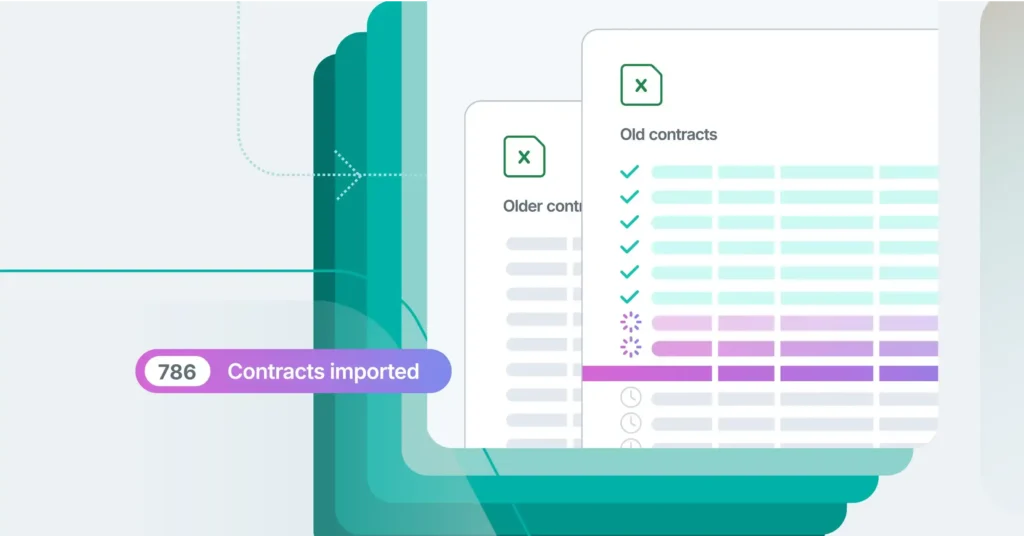How to prepare your team for in-house legal AI

For most corporate legal teams, adopting AI-powered technology is now no longer a question of “if” but “when” – but there’s more to successfully implementing AI than flicking a switch. Follow this step-by-step guide to set yourself up for success before diving in.
Getting started with in-house legal AI
As generative AI continues to transform the way that in-house legal departments work, many are feeling the pressure to get on board. However, in a market flooded with a complex array of solutions and use cases, it can be tough to know where to begin.
When you’re adopting in-house legal AI for the first time, there’s a temptation to jump straight in and hope for the best. But these tools are rarely one-size-fits-all, and getting the most out of them is a marathon, not a sprint. Taking the time to identify your needs and lay the right groundwork will significantly elevate your tech ROI in the long run. So, here’s how to get started.
1. Don’t go it alone – engage an expert
When used in the right way, in-house legal AI presents teams with a significant opportunity to optimize their operations. However, this technology is still evolving, and is only of value when it is reliable, fit for purpose, and grounded in robust governance systems. Although DIY tools like ChatGPT have their appeal, they are likely to introduce unnecessary risk for in-house counsel and generate more problems than they solve. A far better option is to consult the experts.
Just as you would instruct outside counsel for advice on litigation strategies, kick off your AI journey by seeking advice from technology specialists who are familiar with your operations. If you are already using in-house legal software, this might be your existing vendor – particularly if they can offer specific insights into how in-house legal AI can enhance your current systems and practices.
Alternatively, engage with legal technology vendors who can demonstrate specialist knowledge of generative AI within the context of legal workflows, who partner with reputable third parties, and who understand your business needs rather than simply offering AI for the sake of it.
2. Assess your existing tech capabilities
Because AI is data driven, much of its value lies in its ability to help you create, store and surface relevant information. In-house legal AI will always yield stronger outcomes when it’s able to leverage data across all of your legal work. It’s important, therefore, that any new AI tool can integrate seamlessly into your existing tech stack – or, even better, come readily incorporated into a comprehensive legal tech solution such as a legal workspace.
“AI tools should integrate seamlessly with your existing tech stack – or, even better, come built into a consolidated legal workspace.”
Before going any further, this is your opportunity to audit your existing systems of work – even if they only consist of files and spreadsheets. You may already have a centralized repository, such as a CLM, DMS or ELM in place, or all of the above. If so, how well do these solutions connect with each other, and with any other tools you utilize? How easy is it for you to find information using these systems? If you are already struggling with disconnected workflows for contracts and matters, this might be a good time to consider a more consolidated solution.
Once you have a clear picture of your existing tech, look first and foremost for vendors who are using AI as a way to find and utilize the data and metrics which are already being generated by your everyday legal work. You’ll also want to choose vendors who offer full integrations across as much of your legal work as possible, and who help you move data between systems automatically so you don’t need to worry about manually keeping multiple systems in sync.
3. Create a centralized source of truth
Although the power of generative AI to create content gets the lion’s share of the press, in reality in-house legal teams have far more to gain by utilizing AI to find information which already exists – fast. By using AI to surface information at pace, you’ll accelerate a lot of your daily tasks, from finding past matters and contracts to locating contract clause precedents.
However, if your past work is scattered across local drives (or exists purely in your head!) the ability of any AI tool to deliver meaningful results will be limited. Remember, the fuel for generative AI is data – so make it a priority to centralize your dataset, creating a comprehensive “source of truth” for as much of your legal work as possible before bringing AI into the mix.
4. Identify your needs
Once you’ve got a clear picture of your existing systems, it’s time to work out which in-house legal AI use cases are actually going to have the most impact for your team. This will be specific to your legal function and may not always align with the features that vendors champion most heavily. For example, while an AI tool might promise to automatically redline your contracts, redlining might not actually be the part of the contract review process taking you the most time.
Consider the individual steps involved in your own processes. Only by doing this will you be able to understand exactly what is consuming the most time and where technology will help. For example, if your senior lawyers are spending a long time reviewing third party contracts, why is that? Would simply updating your standard playbook so they can quickly access acceptable wording solve the problem? Do you need to go further and reorganize your executed contracts into an accessible drive with a searchable format, or adopt an AI-powered contract extraction tool to build a library of common clauses?
By identifying a list of routine tasks which seem ripe for automation within your team, you’ll arm yourself with an understanding of exactly what you need from an in-house legal AI solution. In most cases, your aim should be to augment these tasks rather than automate them entirely, allowing you to focus on higher-value work. For example, while contract reviews will always need a human in the loop to sign off, AI-powered contract extraction can significantly speed up the process.
5. Identify suitable vendors
Now that you’re clear on your AI requirements, it’s time to approach a suitable vendor. There are a lot of tools on offer on the market, and it’s critical to make sure the software you procure is fit for the unique purposes you have identified.
When you engage vendors for an initial call or a demo, focus the conversation on your specific needs. Come to the meeting with a clear idea of how your legal team works and where they are spending the bulk of their time. Make sure you ask vendors how their solution will help you achieve your goals. Only move forward with vendors who are able to understand your use cases and show you how their product will help.
Engage with vendors who are offering responsible, secure and proven AI tools which are practical and easy to implement – don’t be dazzled by complex use cases which go beyond your needs. Ideally, look for a vendor whose AI comes as part of a scalable solution (such as a legal workspace) which will allow you to adopt workflows gradually rather than jumping in all at once.
6. Always conduct a security review
Finally, never implement software that uses generative AI without conducting a data security review. Once you’ve identified a solution you like, make sure you understand what data is being used to train the models, and how your own data will fit into this. Will your vendor use your data for training? If so, will they use your data to train your own bespoke model (perhaps you’re okay with that within certain parameters), or will they use your data for training generalized models that other customers will access (something you’ll probably be less okay with). Checking what security accreditations the vendor has is a great starting point.
Ready to take the next step on your in-house legal AI journey?
If you’re ready to take the next step towards adopting in-house legal AI, a consolidated solution, such as LawVu, can set you up with the foundations to maximize the long-term value of AI across all of your legal work. To learn more about how a workspace approach to AI could transform the efficiency and output of your legal function, book a demo now.
It's time to move on AI
